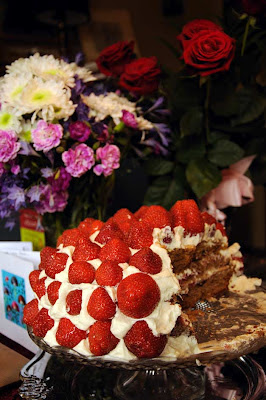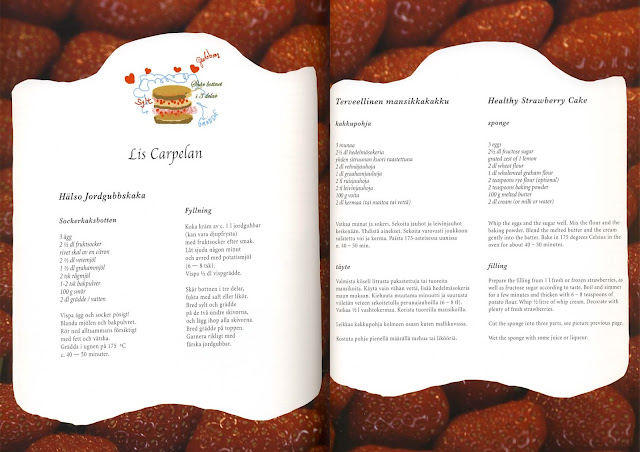 |
| Eija-Liisa Ahtila: "ME/WE, OKAY, GRAY" (still from video, 1993) |
When I was a student of philosophy, which ended up as one of my minor subjects, I was looking for answers about life's deeper questions but didn't find very many. My feeling at the time was that most philosophers sit in their armchair conjuring up contrived problems that have very little to do with what is really going on in the human psyche. The only modern philosopher that I could instantly relate to (and this was when I was 19 years old, without any previous formal education in these matters) was Nietsche. His philosophy is one that encompasses questions about spirituality and the human place in the grand scheme of things. It has an element of psychology to it. Years later, after my failed years in art college in France, I ended up studying the one subject that did provide me with the answers I was looking for, i.e. the psychology of comparative religion. I enjoyed every minute of it - until I finished my Master's degree which dealt with creativity and found that my health problems were making it increasingly difficult for me to read anything at all.
I have to say, however, that I did nonetheless respect the serious philosopher who is that one deviant human being who is able to question the way we look at reality. Regardless whether these strange turns of logic and the challenge to our conditioned perception is of any deeper significance to the human race or not, it's still admirable. Some of these theories, for instance those dealing with our construction of language, are actually even relevant to human development.
I have often thought, however, that conceptual artists are very much like this - philosophers. They often throw ideas into the air for the audience to catch and look at, and it's very much about challenging our programmed brains. The problem is that the issues they like to dwell on very often end up being excuses for bad art, and in fact it's not very good philosophy either. These people would normally be incapable of writing a convincing, intellectual thesis on the subject of their challenging questions. And if they did, they wouldn't be artists but philosophers... I really feel that this is a great problem and I can't think of a single example of a truly successful artist who can do both with panache. Modern and contemporary art deals to a great extent with social commentary, and that's all fine and dandy. Trouble is, very little else goes down very well with the authorities of art, unless it's technically intriguing. What looks interesting and glitzy on the surface, with a promise of greater depths beneath, is very often just gimmicky art in the end.
I have often thought, however, that conceptual artists are very much like this - philosophers. They often throw ideas into the air for the audience to catch and look at, and it's very much about challenging our programmed brains. The problem is that the issues they like to dwell on very often end up being excuses for bad art, and in fact it's not very good philosophy either. These people would normally be incapable of writing a convincing, intellectual thesis on the subject of their challenging questions. And if they did, they wouldn't be artists but philosophers... I really feel that this is a great problem and I can't think of a single example of a truly successful artist who can do both with panache. Modern and contemporary art deals to a great extent with social commentary, and that's all fine and dandy. Trouble is, very little else goes down very well with the authorities of art, unless it's technically intriguing. What looks interesting and glitzy on the surface, with a promise of greater depths beneath, is very often just gimmicky art in the end.
I get updates from the Saatchi Facebook page and it's amazing how often they promote art that is just "clever", i.e. it's a construct (often a face) of little bits of something, and it is technically very well advanced. This is usually not conceptual art, it's just art that looks good on the web. But what does it say? Not much, as far as I can see. On the other hand - and this is a bit of a paradox - there's the idea that individual artists are only eligible for grants and other funding if they provide a challenging view of reality and society in particular, and this is generally speaking the realm of performance art, installations and videos. These pieces don't render themselves well in photos nor are they easy to understand and relate to, so they have to be accompanied with a thousand words. It's the well articulated, but not necessarily very comprehensive, philosophical statements that convince the jury, as far as I can see. How often than not do we end up with art that is not of the heart but of the mind? How often is this just bad philosophy and not art at all?
I'll give you an example. I was checking out a short article on a Finnish female artist who is considered one of the most innovative and is therefore internationally acclaimed. She is Eija-Liisa Ahtila, born in 1959. She also likes to have characters perform in ways that people wouldn't normally behave. In "Okay", a woman paces up and down the floor speaking loudly about violent relationships, and during the course of this performance her voice and thus her personality changes. What does it mean? Her work is supposed to be reminiscent of Finnish cult director Aki Kaurismäki's films - we just watched "The Man With No Name" and found the explicit contrivances about people who can only express themselves through their sentimental music very unconvincing. No - not all Scandinavians have Asperger's syndrome or mild autism like the heroines in many criminal stories of today. In another piece, some women go down in a lift to a place beneath the surface of water, they float around discussing atomic catastrophes; apparently this is meant to be some kind of parallel to their personal crises. I'm not sure I don't find this analogy a bit far fetched, and worse still - I don't really care. I'm not sure this is good psychology either, and so it leaves me indifferent. On this note, I have to admit I haven't seen any of this in real life and may have a better opinion if I did (but I doubt it). You may recognize the imagery of floating women and people in awkward, dreamlike situations from my review of Pia Borg's work.
On her website, Ahtila explains "ME/WE OKAY from 1993": "A short film with three fictional episodes and narration consisting of rhythmic monologues. The subject of these three humane dramas is the transformation of one´s identity. ME/WE is about balancing individual identity and about control. OKAY uses a single on-screen persona and various voices to consider the shifts, desires, and inhibitions of the ego within a sexual relationship. The subject of GRAY is the change in reality caused by a catastrophe, and the blurring of the boundary between ego and other."
You may like to check out JAR, an online magazine that attempts at a synergy between art and serious research. I signed up for it but couldn't figure out how to upload my stuff. I hope they have made it easier.
You may like to check out JAR, an online magazine that attempts at a synergy between art and serious research. I signed up for it but couldn't figure out how to upload my stuff. I hope they have made it easier.
Modern/contemporary art is supposedly all about the fragmentation of the human being. It seems to me, that only those who admit to being existentially lost are considered serious artists. As far as I can see, it leaves us with a body of work that is mostly nonsensical and chaotic. I don't find it helpful to human evolution. I don't believe life has to be that way at all, and my own art does not express a fragmented world view. I'm not saying I am not interested in conceptual art... I will continue to be curious, and probably more so the older I get. I will continue to try and read what people mean even though I struggle to do so. However... We were watching a documentary about the Turner Prize and whether the art that has been awarded or nominated really is any good. I would say that sadly, most of it is just gimmicky. I mean come on, someone gets an award for turning the lights on and off in an exhibition space! This artist has nothing better to do than make art about his inability to make art - and that's quite a symptom of the "modern". And yet another is awarded for flattening silver plated objects and giving them a "new lease of life"... It's just sad.
What do you think? I would love some comments.
As I had just finished this article I came across this one, and here the author, Ben Lewis, states as he ponders the decadence of contemporary art (decadence has crossed my mind too) and especially that of Damien Hirst: "There is a pattern typical of these end-phase periods, when an artistic movement ossifies. At such times there is exaggeration and multiplication instead of development. A once new armoury of artistic concepts, processes, techniques and themes becomes an archive of formulae, quotations or paraphrasings, ultimately assuming the mode of self-parody./.../ I believe that this decline shares four aesthetic and ideological characteristics with the end-phases of previous grand styles: formulae for the creation of art; a narcissistic, self-reinforcing cult that elevates art and the artist over actual subjects and ideas; the return of sentiment; and the alibi of cynicism." Read more about "why modern art is so bad" here on www.prospectmagazine.co.uk! It's potent stuff. I don't agree that the use and repetition of certain style elements is all bad as they are signs of the times, but I do agree that style can easily become mannerism and a lack of originality.
 |
| Damien Hirst at Tate Modern, "For the love of God": This skull is covered with real diamonds. Perhaps this is meant to be a cynical comment about modern day art collectors... |
"But what a small and conservative act of rebellion this glossiness is. Art has become small, superficial and self-indulgent in its emotional range: sentimental rather than truly intellectual or moving." I couldn't agree more, though my knowledge is quite limited due to years of ignoring the whole realm of conceptual art. I love the end: "To paraphrase Trotsky, let us turn to these artists, their billionaire patrons and toadying curators and say: 'You are pitiful, isolated individuals. You are bankrupts. Your role is played out. Go where you belong from now on—into the dustbin of art history!'”














web_0.jpg)
























